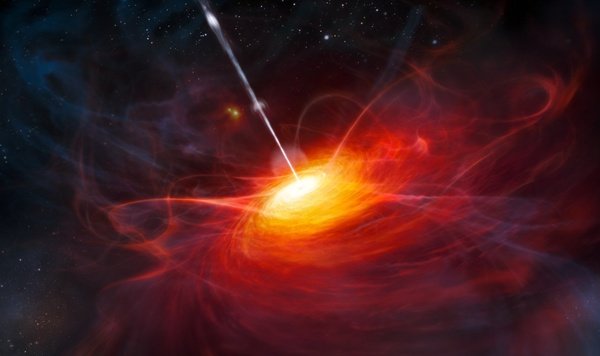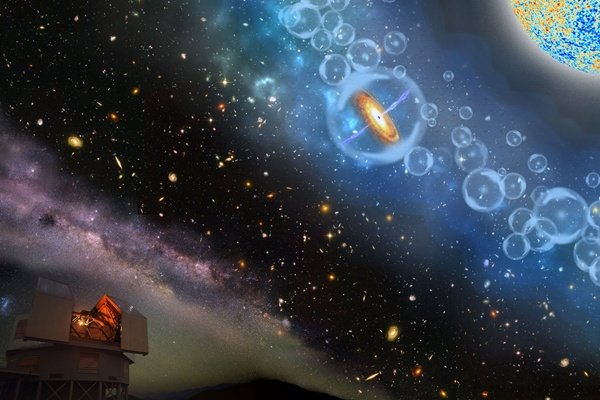
How do you build a black hole with the mass of 800 million Suns in 690 million years? That the million dollar question, based on the recent discovery of the farthest supermassive black hole, sitting more than 13 billion light years away. This newly discovered quasar, thought to be just one of 100 or fewer such objects in the entire sky, will help astronomers unravel the conditions in the very early universe, shortly after the Big Bang.
The extremely big, bright disk of material around a supermassive black hole already containing 800 million solar masses at a time when the universe was just 10 percent its current age, less than 700 million years after the Big Bang. This new record holder for the most distant supermassive black hole was found in data taken for three large surveys the legacy survey, nasas wide field Infrared survey explorer, and the united kingdom Infrared telescope deep sky survey large area survey.
How do you grow a black hole?
In today’s universe, most new black holes form when a massive star goes supernova. Its dense core if it’s above a certain threshold will collapse down into a singularity a black hole. These stellar mass black holes are typically a few up to 100 or so solar masses, and astronomers believe they can only grow further through accretion or mergers.
But in the early universe, it was commonplace for black holes 100,000 times the mass of the Sun or more to form. How these literally supermassive black holes formed, especially so quickly, is still an ongoing investigation. There are several theories, but determining which one is or ones are correct requires knowing more about the conditions in the early universe.
And that where quasars like come in. Quasars are among the brightest and most distant known celestial objects and are crucial to understanding the early universe, said bram venemans of the max ppanck Institute for astronomy in germany. venemans studied the host galaxy and is the first author of the Letters paper. But because they are so massive, they need at least some time to form, which is why current models predict only somewhere between 20 and 100 bright quasars as distant as in the entire sky.
That unique time is called the epoch of reionization. Immediately after the Big Bang, the universe was a much smaller, hotter, and denser place. It of course began expanding, and cooling off in the process. By the time the universe was about 400,00 years old, it had cooled enough that particles could slow down enough to combine and form neutral hydrogen atoms. But nothing else formed for some time, until gravity finally caused some denser regions of hydrogen to collapse and form stars, and later galaxies. Once these stars and galaxies began shining, they started putting out light photons across the universe. These photons began to knock electrons off the neutral hydrogen gas permeating the universe, ionizing it and leaving it in the state in which it now exists, today. The time when this occurred is called the epoch of reionization.

The era of big data
This amazing find may only just now be possible because of the amount of data coming out of the large, all sky surveys taking place today. This is a very exciting discovery, found by scouring the new generation of wide area,said Daniel Stern of nasa Jet propulsion laboratory in pasadena. with several next generation, even more sensitive facilities currently being built, we can expect many exciting discoveries in the very early universe in the coming years.

owow great
Ooo AswOme
Hi! I am a robot. I just upvoted you! I found similar content that readers might be interested in:
http://astronomy.com/news/2017/12/lighting-up-the-dark-universe
Great. Carry on
:0 astronomy! I didnt even think about it... great topic!